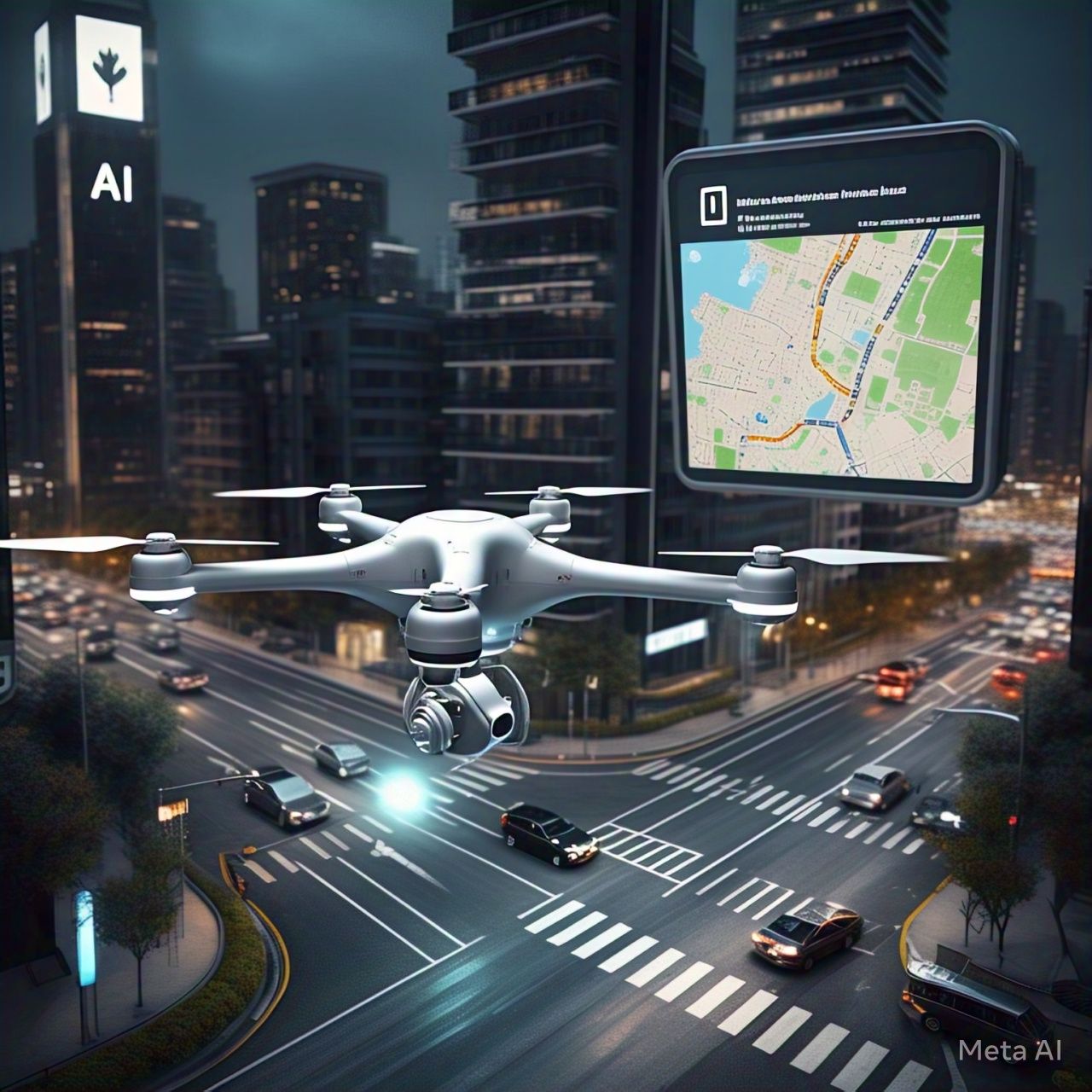Table of Contents
- Introduction
- The Role of AI in Traffic Safety
- How AI Predicts Traffic Accidents
- AI-Powered Accident Prevention Strategies
- Machine Learning in Driver Behavior Analysis
- Smart Traffic Systems and Real-Time Monitoring
- Autonomous Vehicles and AI-Driven Safety Measures
- Challenges and Ethical Considerations
- Future of AI in Traffic Accident Prevention
- Conclusion
- FAQs
1. Introduction
Traffic accidents remain one of the leading causes of death worldwide, claiming millions of lives annually. Traditional road safety measures have helped reduce fatalities, but the advent of artificial intelligence (AI) presents a revolutionary approach to predicting and preventing accidents before they happen. AI-driven technologies can analyze real-time traffic data, detect hazardous conditions, and provide proactive safety measures. This article explores how AI is reshaping traffic accident prevention.
2. The Role of AI in Traffic Safety
AI plays a crucial role in road safety by:
- Predicting high-risk zones through data analysis.
- Monitoring driver behavior to identify dangerous patterns.
- Enhancing traffic signal efficiency to reduce congestion-related crashes.
- Providing real-time alerts for road hazards.
- Integrating with autonomous vehicle systems for enhanced safety.
AI-powered systems help authorities and drivers make informed decisions that minimize road accidents.
Table: Traditional vs. AI-Powered Traffic Safety Measures
| Feature | Traditional Methods | AI-Based Solutions |
|---|---|---|
| Accident Prediction | Based on historical data | Real-time data and machine learning models |
| Driver Monitoring | Manual observations | AI-powered cameras and sensors |
| Traffic Control | Fixed signal timings | Adaptive AI-driven systems |
| Emergency Response | Reactive (post-accident) | Proactive alerts and automatic interventions |
3. How AI Predicts Traffic Accidents
AI uses big data, machine learning, and predictive analytics to forecast accidents. Methods include:
- Analyzing GPS and traffic camera data to detect dangerous road conditions.
- Using historical accident data to identify high-risk areas.
- Employing deep learning algorithms to assess driver behavior.
- Processing weather and environmental data to predict hazardous conditions.
By leveraging these data sources, AI can anticipate accidents before they happen and take preventive action.
4. AI-Powered Accident Prevention Strategies
AI-driven safety measures include:
- Automated traffic signal adjustments to prevent congestion-related crashes.
- AI-based speed regulation systems to limit risky driving behavior.
- Real-time hazard alerts for drivers through GPS navigation systems.
- Collision avoidance systems in modern vehicles.
- Smart road infrastructure with AI sensors detecting obstacles and weather conditions.
These AI-powered strategies significantly reduce the likelihood of road accidents.
5. Machine Learning in Driver Behavior Analysis
Machine learning helps detect unsafe driving behaviors by:
- Analyzing vehicle movement patterns to identify sudden acceleration or erratic lane changes.
- Monitoring driver fatigue and distraction using AI-powered cameras.
- Predicting risky behavior trends based on real-time traffic data.
- Providing automated warnings for drivers exhibiting dangerous habits.
By continuously learning from vast datasets, AI enhances driver safety and reduces accident risks.
6. Smart Traffic Systems and Real-Time Monitoring
AI-driven traffic management systems improve safety through:
- Real-time accident detection and response.
- Dynamic rerouting of vehicles to avoid congestion.
- AI-powered surveillance cameras that identify traffic violations.
- Integration with emergency services for rapid accident response.
These systems create safer roads by preventing bottlenecks and ensuring swift interventions during emergencies.
7. Autonomous Vehicles and AI-Driven Safety Measures
Self-driving cars utilize AI to enhance road safety by:
- Using LiDAR and computer vision to detect obstacles.
- Employing AI-driven decision-making to avoid collisions.
- Communicating with traffic management systems for smoother navigation.
- Enhancing vehicle-to-vehicle (V2V) communication to prevent crashes.
Autonomous vehicles equipped with AI technology are expected to drastically reduce accident rates in the future.
8. Challenges and Ethical Considerations
While AI offers groundbreaking advancements in traffic safety, challenges remain:
- Data Privacy Issues – AI-based traffic monitoring raises concerns about personal data security.
- AI Decision-Making Transparency – Understanding how AI makes decisions is critical for trust.
- Infrastructure Costs – Implementing AI-powered traffic systems requires significant investment.
- Cybersecurity Risks – AI-driven vehicles and traffic systems must be protected from hacking.
- Public Acceptance – Adoption of AI in road safety depends on user trust and compliance.
Addressing these challenges will be key to the widespread success of AI-driven traffic safety solutions.
9. Future of AI in Traffic Accident Prevention
The future of AI in road safety includes:
- Enhanced AI-Powered Dashcams – Real-time analysis of road conditions.
- 5G-Enabled Smart Traffic Systems – Faster data transmission for accident prevention.
- AI-Powered Drones – Overhead monitoring of highways to detect congestion.
- AI-Integrated Smart Road Infrastructure – Intelligent road surfaces that adapt to conditions.
- Blockchain for Traffic Data Security – Ensuring safe and tamper-proof AI-driven traffic analytics.
These innovations will play a critical role in making roads safer and reducing accidents.
10. Conclusion
AI is transforming traffic safety by predicting and preventing accidents through advanced analytics, real-time monitoring, and adaptive decision-making. AI-driven technologies such as smart traffic systems, machine learning-based driver analysis, and autonomous vehicle integration are reshaping the future of road safety. While challenges remain, the continued advancement of AI will undoubtedly make our roads safer and more efficient. By embracing AI-powered solutions, we can significantly reduce accident rates and save lives.
11. FAQs
1. How does AI predict traffic accidents?
AI predicts traffic accidents by analyzing real-time traffic data, detecting high-risk driving behavior, and identifying accident-prone locations using machine learning algorithms.
2. Can AI really prevent road accidents?
Yes, AI can prevent road accidents by optimizing traffic signals, issuing real-time hazard alerts, and assisting drivers in making safer decisions.
3. What role does AI play in autonomous vehicles?
AI enables autonomous vehicles to navigate safely by detecting obstacles, making split-second driving decisions, and communicating with traffic systems.
4. Are AI-powered traffic systems expensive to implement?
While AI-powered traffic systems require substantial investment, their long-term benefits in reducing accidents, improving traffic flow, and enhancing road safety outweigh the costs.
5. What are the biggest challenges in AI-driven traffic safety?
Challenges include data privacy concerns, AI transparency issues, cybersecurity risks, high implementation costs, and the need for public trust and acceptance.
Citations:
- National Highway Traffic Safety Administration (NHTSA) – AI in Traffic Safety
- MIT AI Lab – Machine Learning for Road Safety
- World Economic Forum – AI’s Role in Reducing Traffic Accidents
- International Transport Forum – AI and Smart Traffic Systems
- Smart Cities Council – AI-Powered Road Safety Innovations




